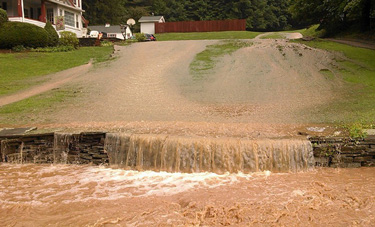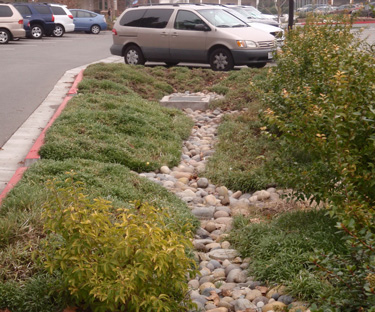Storm water mitigation
Every week there is news of severe flooding, massive landslides, sink holes and people losing their lives as a result. We may blame climate change, storms that happen with seeming increasing frequency and ferocity, and our cities and their infrastructure are failing to handle the deluge.
Beneath us, unseen, the underwater aquifers that rely on water from the surface to replenish them, are drying up because we are draining them too quickly and impervious city surfaces prevent the water from percolating down to re-supply them.
Before there were cities and farmland, there were forests and tussocks. The trees and grasses would catch the rain so it would filter slowly down to the ground. What water the plants didn’t trap with their roots, the carpet of leaf litter would absorb, and slowly release to the streams, rivers and aquifers.
Now our cities are paved in impermeable surfaces – buildings, footpaths, parking areas, roads – and there are very few gaps in the ‘veneer’ for water to escape naturally. So rain is forced into gutters and down storm water drains which are becoming less able to cope with the increasing ferocity of these floods.
The storm water also carries pollutants and man-made rubbish into our streams and rivers, affecting the quality of the water and life in these waterways.
Ok, so it all sounds a bit dramatic, but storm water runoff is a problem of immense scale. There are some simple steps we can take as individuals to reduce storm water runoff and minimise its effect on our own property.
- Create more surfaces that are pervious to water
- Replace concrete or asphalt driveways, paths, patios and parking spaces with paving stones or bricks, or gravel
- Take out the centre of a concrete driveway, replacing it with grass, low plants or gravel.
- Where water does run off a driveway or patio, create a trench filled with coarse gravel to collect the water, slowing its runoff and allowing it time to seep into the soil.
- Collect the water that comes off your roof which only ends up in the storm water system. This will be a good source of water for the garden and washing the car when there might be a drought.
- Replace hard surfaces with lawns, and even better replace lawns with gardens. Lawns are not terribly efficient at reducing runoff and they do require a lot of water themselves during drought. A garden of shrubs and flowers will collect and hold more water with their larger root systems, and they require less maintenance.
- Don’t leave soil exposed which can easily be washed away by heavy rain, or be as impervious as concrete.
- Plant with shrubs, groundcovers and grasses and/or
- Put mulch (compost or bark chips) over the soil. A layer of mulch will absorb water, reduce runoff and suppress weeds.
- Don’t remove trees and shrubs on steep slopes and in gullies. The tree canopy slows the fall of rain, allowing the ground time to absorb it, plus the roots absorb water and bind the soil together. Even a cover of gorse is better than a bare slope.
- If building a new home, retain as many trees as possible to lessen the impact on the site.
- Create a rain garden in depressions where water will naturally flow and be trapped and line it with plants.
- Install berms and swales.
- A berm is a slightly raised area which can be used to slow runoff on steep slopes and can be planted with trees and shrubs.
- A swale is a ditch with a mild slope and can be planted with grass or other plants to direct water to a rain garden. Swales can also direct water toward a storm drain or street. Since they significantly reduce the amount of runoff, very little water that enters a vegetated swale will actually make it to the street or drain.
By using plants wisely we can reduce the effects of heavy rain events, and create a nicer environment to live in.

12-Jan-2016


A vegetated swale designed to collect storm water from the carpark.

